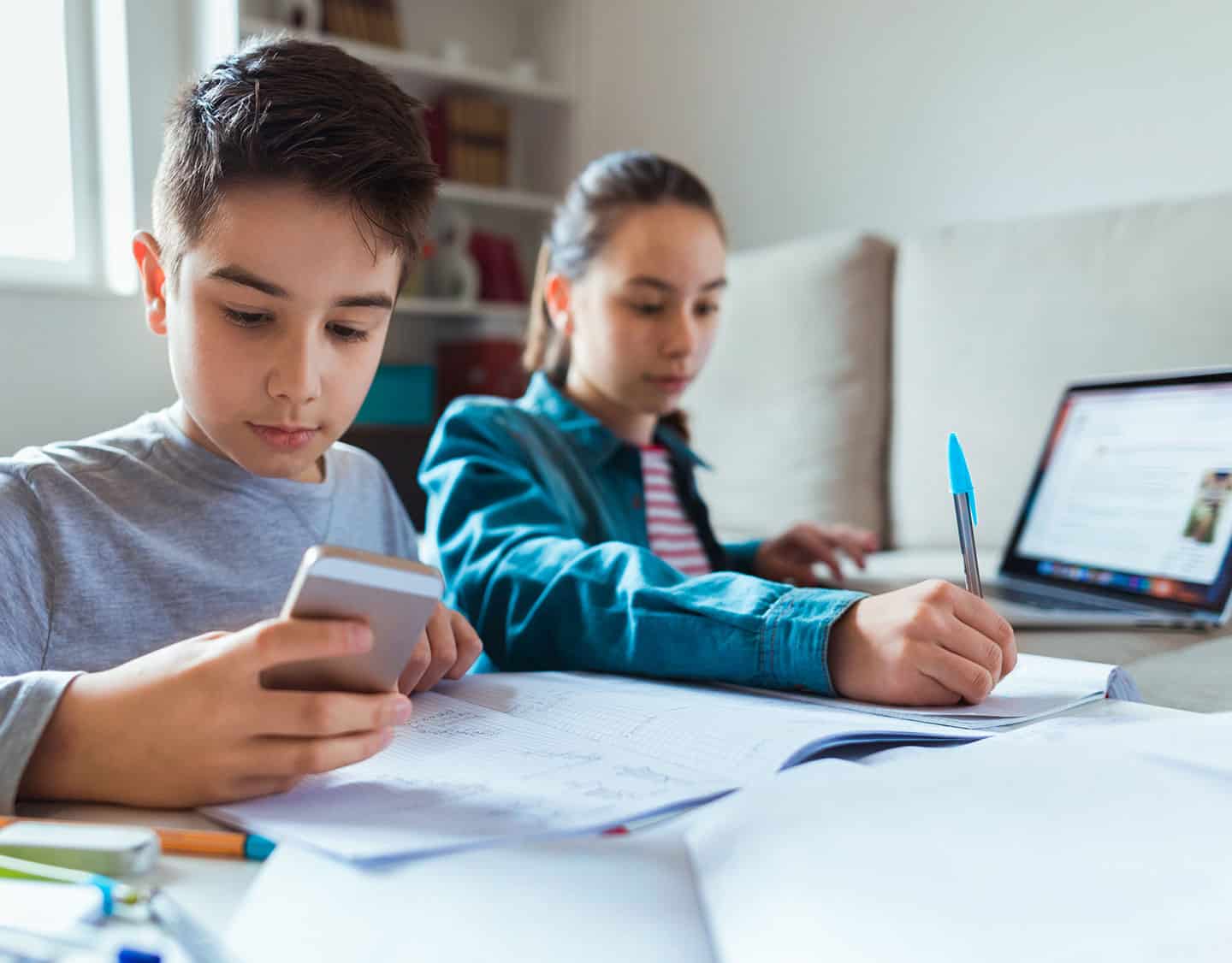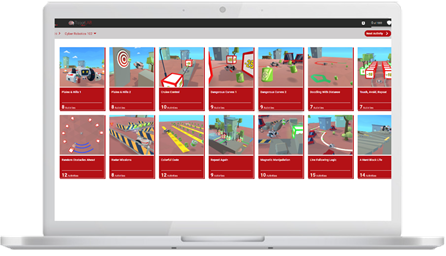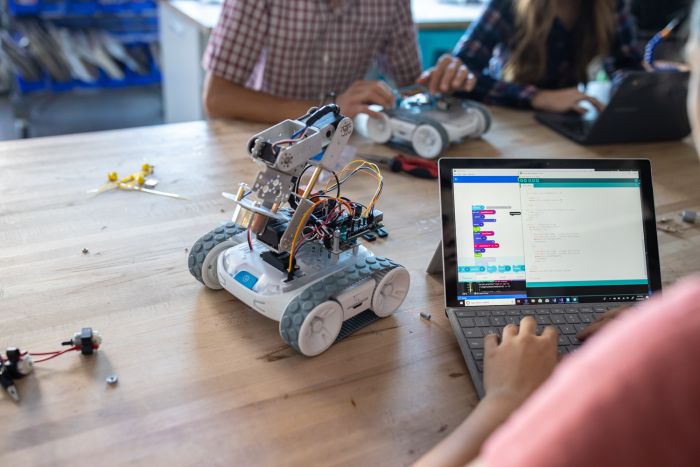What Will The Classroom of The Future Look Like?
Plenty of science fiction authors have asked this question and there are as many answers as there are writers: some have even imagined a future with no classrooms at all, where all children learn from home with a machine as a teacher and consider traditional school an alien concept.
But that particular future is unlikely to come true: as much as AI is growing and studying from home is becoming an increasingly popular solution, education still requires some form of human contact and technology is a tool, not a replacement.
Even so, technology can reshape the design of the classroom and the core philosophies of teaching and learning in significant ways: let’s explore how.

- 0 Comments
- Apr 14, 2020 10:00:00 AM
- Posted by Natalia Galvis
- Topics: EdTech, STEM, Computer Science, Coding, Robots,, Learning, VR, STEMchat, Edchat, teaching, coronavirus, homeschool, online, Virtual Reality
Keeping Students Engaged in Digital Learning
[VIDEO] Whether you’re new to teaching online or a veteran, these six tips can help you make sure your students stay connected and immersed in learning. Middle school teacher and project-based learning coach Heather Wolpert-Gawron offers excellent suggestions for managing classrooms online.

- 0 Comments
- Apr 13, 2020 10:00:00 AM
- Posted by Natalia Galvis
- Topics: EdTech, STEM, Computer Science, Coding, Robots,, Learning, VR, STEMchat, Edchat, teaching, coronavirus, homeschool, online, Virtual Reality
How to Use Virtual Spaces for Remote Learning
Jaime Donally, an ed tech consultant and FETC® featured speaker, says educators and students can collaborate, create and connect in these 360-degree environments
 Photo by Frank Vessia
Photo by Frank Vessia
- 0 Comments
- Apr 10, 2020 10:00:00 AM
- Posted by Natalia Galvis
- Topics: EdTech, STEM, Computer Science, Coding, Robots,, Learning, VR, STEMchat, Edchat, teaching, coronavirus, homeschool, online, Virtual Reality
5 Ways to Focus on Student Success in a Pandemic
Whether instruction is online or in person, the goal is to help increase student success.
 Photo by Wes Hicks
Photo by Wes Hicks
- 1 Comments
- Apr 9, 2020 10:00:00 AM
- Posted by Natalia Galvis
- Topics: EdTech, STEM, Computer Science, Coding, Robots,, Learning, STEMchat, Edchat, teaching, coronavirus, homeschool, online
10 Strategies for Online Learning During a Coronavirus Outbreak
As the COVID-19 coronavirus continues to spread, schools around the globe are shifting to online learning in an effort to slow the spread of the disease.

- 1 Comments
- Apr 8, 2020 10:00:00 AM
- Posted by Natalia Galvis
- Topics: EdTech, STEM, Computer Science, Coding, Robots,, Learning, STEMchat, Edchat, teaching, coronavirus, homeschool, online
Take a #StayAtHome virtual tour of Disneyland with these 88 movies and shows during coronavirus shutdown
From a galaxy far, far away to a whole new world, you can bring a piece of Disneyland home even if you can’t go to the Anaheim theme park during the continuing coronavirus closure.

- 0 Comments
- Apr 7, 2020 10:00:00 AM
- Posted by Natalia Galvis
- Topics: EdTech, STEM, Computer Science, Coding, Robots,, Learning, STEMchat, Edchat, teaching, coronavirus, homeschool, online
Making Your Own Education When Traditional College Isn't an Option
Let me begin by informing you that a college education is not a necessity. It’s just one of the options to choose in a long list which consists of several other great alternatives. Hence you could even strike it out from the list and you would still have choices that are good enough to ensure a comfortable life for you.

- 0 Comments
- Apr 6, 2020 10:00:00 AM
- Posted by Natalia Galvis
- Topics: EdTech, STEM, Computer Science, Coding, Robots,, Learning, STEMchat, Edchat, teaching, coronavirus, homeschool, online
7 Keys To Effective Online Learning
High-quality and engaging online learning programs have a number of common characteristics.

- 0 Comments
- Apr 3, 2020 10:00:00 AM
- Posted by Natalia Galvis
- Topics: EdTech, STEM, Computer Science, Coding, Robots,, Learning, STEMchat, Edchat, teaching, coronavirus, homeschool, online
RobotLAB is offering free online Virtual Robotics and Coding courses to those affected by COVID-19.
We know that schools are being challenged with finding ways to convert their class activity into online lessons and how to train teachers to do so, all to ensure the continuation of education for the students.
Recognizing the enormous impact this situation has on all schools, we at RobotLAB, wanted to inform you of the following unique proposal by Amazon and Engage EDU Lite (Powered by CoderZ):
Amazon Future Engineer is offering free online Virtual Robotics and Coding courses for any student or teacher affected by school closures due to COVID-19 in the US.
Students and teachers at primary schools, middle schools and high schools are invited to program their own virtual robots through the Engage EDU Lite platform.
Check it out Here

Keep learning during COVID-19 with RobotLAB and CoderZ!
CoderZ is an online educational environment that improves students 21st century skills, while they are having fun programming their own virtual cyber robot. CoderZ and RobotLAB has different lessons to do at home! Check them out Here
- 8 Comments
- Apr 2, 2020 10:00:00 AM
- Posted by Natalia Galvis
- Topics: EdTech, STEM, Computer Science, Coding, Robots,, Learning, STEMchat, Edchat, teaching, coronavirus, homeschool
Why Learning to Code Benefits Kids, Regardless of Future Career Choice

“An understanding of computer science is becoming increasingly essential in today’s world. Our national competitiveness depends upon our ability to educate our children—and that includes our girls—in this critical field.”—Sheryl Sandberg
Sheryl Sandberg, the chief operating officer of Facebook, is one of many advocates of computer science education in our country. Educators, technology experts, business leaders, and even celebrities support a new movement with a clear purpose: to teach children to read and write code.
“Coding is the new literacy. To thrive in tomorrow’s society, young people must learn to design, create and express themselves with digital technologies,” says Mitchel Resnick, a media arts and sciences professor at the MIT Media Lab.
Coding is so important because its impact extends far beyond simply creating software and websites.
- 0 Comments
- Apr 1, 2020 10:00:00 AM
- Posted by Natalia Galvis
- Topics: EdTech, STEM, Computer Science, Coding, Robots,, Learning, STEMchat, Edchat, teaching, coronavirus, homeschool
Relevant Posts
Popular Posts
Subscribe to Email Updates
-
I Want To Learn MoreADDITIONAL INFORMATION


